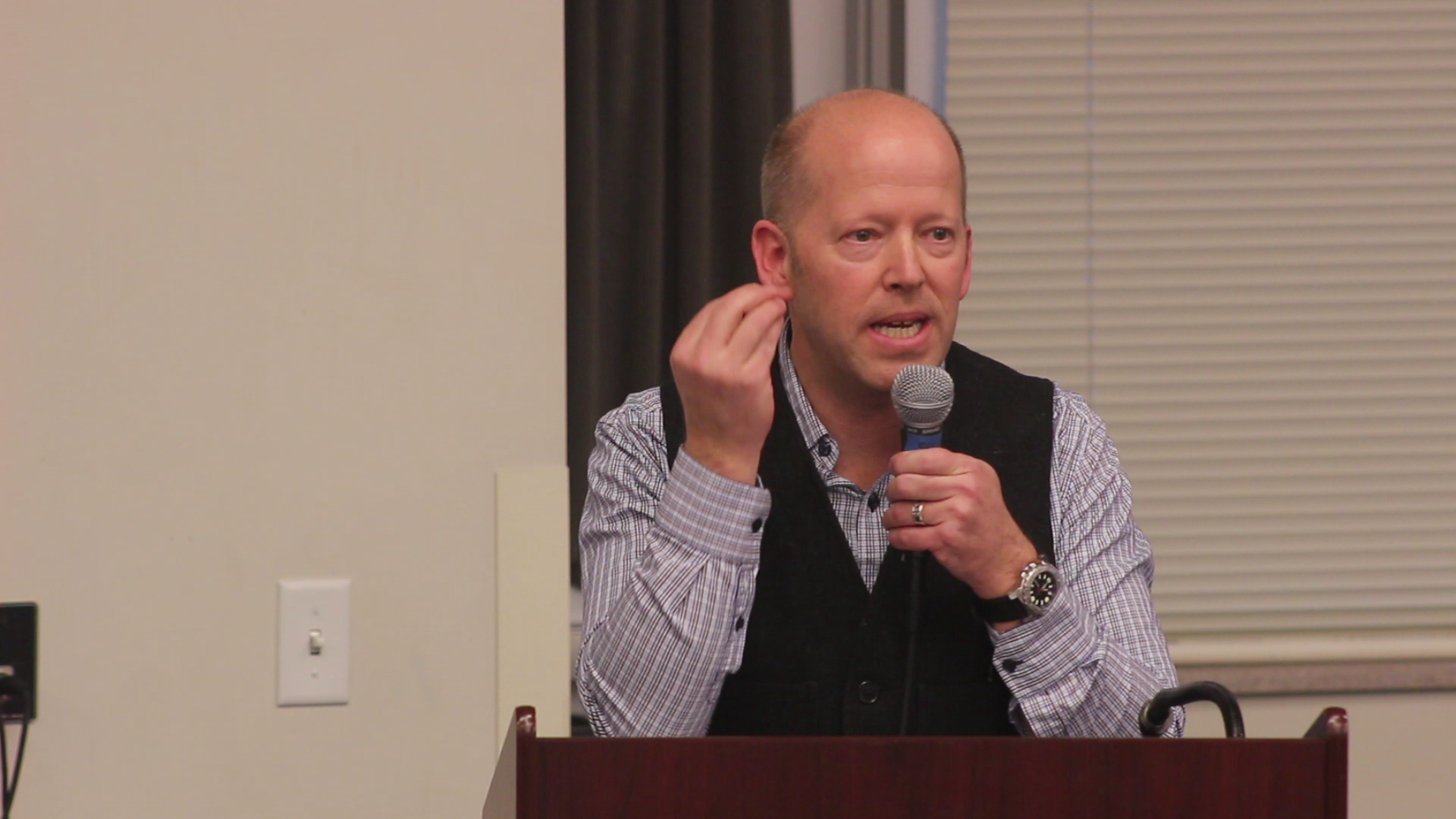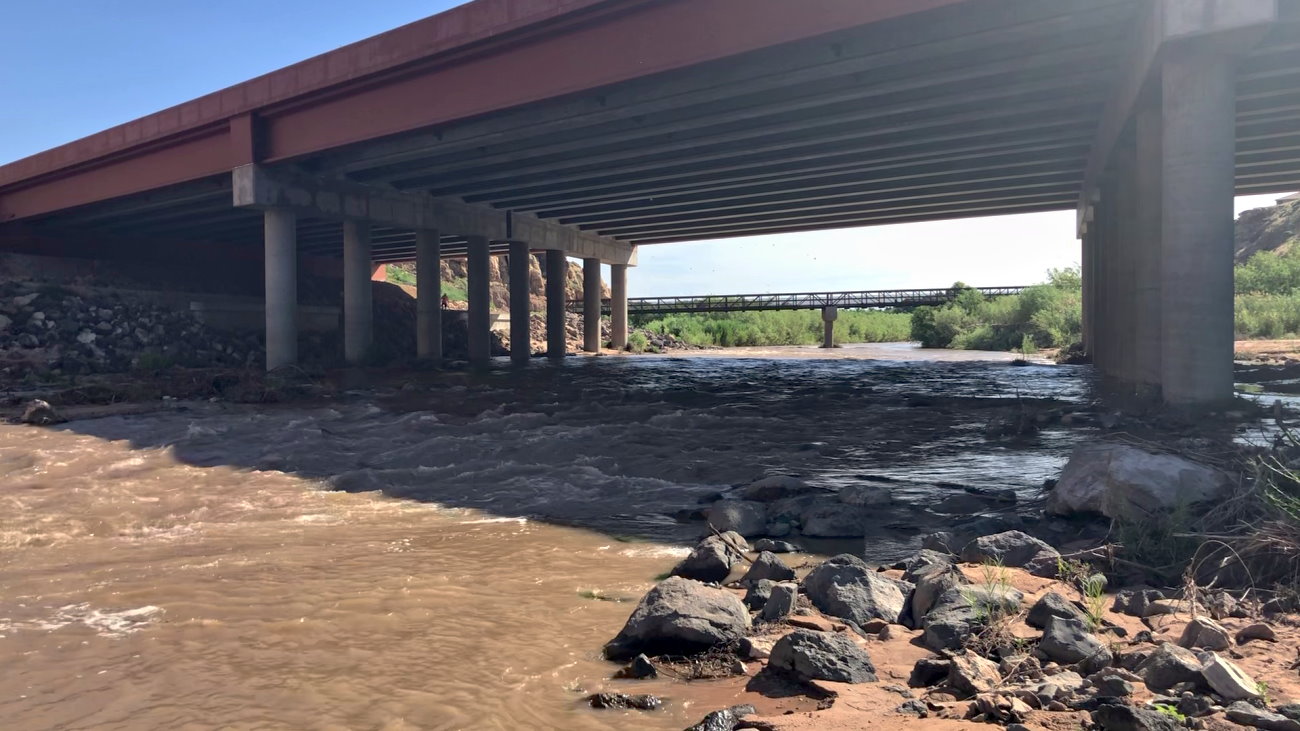ST. GEORGE — The U.S. Bureau of Reclamation released a draft environmental impact statement for the Lake Powell Pipeline project Monday and encourages the public to submit comments on the study between now and early September.

State and local water officials are pleased with the results of the draft environmental impact statement, more commonly referred to as an EIS, while opponents of the project carry a different view.
“(This) is an important milestone because we can get a permit,” said Brock Belnap, an associate general manager at the Washington County Water Conservancy District overseeing the Lake Powell Pipeline project. “The law requires the federal government to study all the various impacts on the environment the project might affect.”
Based on those environmental impacts, the federal government must establish whether a proposed project is warranted.
“We’re very pleased that the environmental impact statement recognizes that Washington County has a need for the project,” Belnap said.
The EIS also finds Washington County is able to pay for the pipeline project as long as the projected growth continues, Belnap said.
Opponents of the Lake Powell Pipeline project, such as Zachary Frankel, executive director of the Utah Rivers Council, say parts of the EIS are based on outdated data. He also said the pipeline will be more of a burden than a benefit to Washington County residents as the Utah Rivers Council claims water user fees will skyrocket in order to pay for the potentially multibillion-dollar pipeline.

“This $3 billion boondoggle is being presented by lobbyists as a gift to Washington County,” Frankel said in a statement. “But it’s really a burden that comes with 500% increase in water rates since cheaper water sources are being ignored by a corrupt state agency that wants taxpayer funding.”
The water district notes that while revenue will increase, rates will not go up drastically. Water rates are projected to only rise by about 22% by 2045. Revenue will be driven primarily by population growth and the resulting impact fees.
The Lake Powell Pipeline is a proposed 140-mile, 70-inch diameter pipeline that will run from Lake Powell to the Sand Hollow Reservoir. It is anticipated to carry around 77 million gallons a day to several communities in Washington County.
Price estimates for the pipeline are currently between $1.4 billion and $1.7 billion. Frankel said Tuesday that the true cost could be as high as $3.5 billion.
The public comment period for the draft EIS started this week and runs through Sept. 8.
Following the comment period, the Bureau of Reclamation will issue a final EIS with a decision on whether to issue a permit for the Lake Powell Pipeline’s construction.
Need and benefit
According to the EIS, Washington County needs a second source of water in order to accommodate future population growth. The county is estimated to reach 500,000 people by 2060. Currently, the only source of water for the county is the Virgin River Basin, and it won’t be able to sustain future population growth, according to the water district.

“Despite various conservation objectives … population growth will increase total annual water demand beyond the existing water supplies of Washington County,” the EIS states. “A more diverse and secure water supply is needed to mitigate vulnerabilities to unexpected and supply scenarios and ensure reliable water deliveries into the future.”
While water taken from the Virgin River has supplied Washington County well up to this point, Belnap said, the river’s flow also fluctuates from year to year and can be unpredictable. The Colorado River, while also impacted by fluctuations in flow due to how much snowpack – or lack thereof – is produced, has nonetheless shown itself to be a reliable source of water for generations, he said.

In addition to supplying a second, reliable source of water, Belnap said the estimated long-term value of the project is over $2 billion. The EIS clarifies long-term as being a period of 100 years following the pipeline’s pending construction.
The state of Utah is noted to benefit in the short-term during the pipeline’s construction as it is estimated to create 11,000 jobs that will produce $600 million in labor income during the project, according to the EIS. The state overall is also estimated to gain $1.7 billion via the market value of goods and services produced in connection with the project.
The Utah Rivers Council has previously argued that Washington County actually has enough water on hand to be able to serve a growing population, a claim the water district has disputed.
Paying for the pipeline
“Other key findings of the draft EIS is that the project is affordable,” Belnap said. “The draft looked at our community’s ability to pay for the project (and it) is there if we continue to grow as projected, and that it is affordable.”
The water district has a plan in place for the repayment of the Lake Powell Pipeline – which is expected to be initially funded by state and federal resources to an extent – through gradual increases to water rates, impact fees and property taxes.
The EIS estimates the construction cost of the pipeline to be around $1.4 billion, with a total project cost of between $1.8-2 billion depending on which alternative route is chosen for the pipeline if permitted.

“That is the biggest problem with this project,” Frankel said. “It’s being presented as a benefit, but it’s really a burden to Washington County residents. They’re doing a disservice to these poor residents who are going to be stuck with gigantic increases in water rates, impact fees and property taxes.”
Frankel also said the true cost of the pipeline project still isn’t known as 30 pages of the financial data originally included in the EIS has been marked “confidential” and isn’t available for public view.
According to the water district, the Bureau of Reclamation has not redacted any financial data. The only thing that has been marked as confidential are the detailed engineering drawings, Water District spokesperson Karry Rathje said, noting that it’s common for federal agencies to not disclose this information due to security concerns.
The Utah Rivers Council has often cited a study released in 2016 produced by several university economists who predicted the cost of pipeline repayment would be sky high for Washington County residents.
Rathje said Tuesday that the 2016 analysis done by the economists was biased and based more on assumption than fact.
Path of the pipeline: Native American concerns
There are two courses recommended for the Lake Powell Pipeline to take. One is the Southern Alternative and the other is the Highway Alternative. While both routes start at Lake Powell and end at Sand Hollow Reservoir, they also either pass through or close to lands held sacred by Native Americans in Arizona.
The Southern Alternative, which is the preferred alternative, travels south of the Kaibab Paiute Reservation along a preexisting utility corridor. The Highway Alternative would take the pipeline along Arizona 389, which cuts across the reservation.

According to a supplement to the EIS titled “Environmental Justice,” which was prepared by the Kaibab Band of Paiute Indians, the Highway Alternative would result in disrupted gravesites, the disruption of ceremonial offerings, and the destruction of spiritual connections to the land. This process would also create what the Kaibab Band called “angry water” due to the imbalance it would create.
The Kaibab Band stated in the supplement that the Lake Powell Pipeline will create an imbalance by “moving the Colorado River from where the creator placed it across a hundred miles of landscape and depositing it where it does not belong. … This action will make the river angry and confused, the results of which are unknown but clearly a source of imbalance in the world.”
“We are very respectful of our Native American neighbors in the Kaibab tribe, and they are sensitive to the route the pipeline takes,” Belnap said.
The water district has worked, and continues to work, with the Kaibab Band concerning the route of the pipeline, Belnap said. Where the pipeline draws close to area’s held sacred by the tribe, the project will have archaeologists and tribal monitors on hand to assess the issue, he said.
Water rights: From the Green River to Lake Powell
There is currently a water rights change application before Utah’s state engineers that would allow just over 86,000 acre-feet of water from the Green River above the Flaming Gorge Reservoir to flow down to Lake Powell.
Utah already has rights to that water, Belnap said. If the application is approved, the point of diversion – the location where the state would be allowed to draw water from – would shift from the Green River to Lake Powell. The process was initially discussed in a public meeting at the Dixie Convention Center in December 2017 and involved the water district, the Utah Division of the Water Resources and the Bureau of Reclamation.

The additional flow of water down the river will have a side benefit of aiding the Bureau of Reclamation in its obligation to protect the environments of endangered species in and around the Green River, Belnap said.
As the change application is still pending, the Utah Rivers Council has said that “no approved water rights currently exist for the pipeline.”
The Utah Rivers Council, along with over environmental advocacy groups, have sent petitions to Teresa Wilhelmsen, the state engineer, asking her to deny the application.
“Climate change is reducing the flows of the Colorado River because it’s reducing the snowpack of the entire Colorado River Basin,” Frankel said. “As the flows of the river drop, it means that there is less water available to divert. This draft EIS totally shirks the responsibility to determine whether there’s water available in the Colorado River to put in a pipeline.”
There are many peer-reviewed studies available that state there won’t be enough water in the Colorado River to support the pipeline due to climate change, Frankel said. Climate change data used in the draft EIS concerning the subject either ignores these studies or takes from a study that is at least a decade out of date, he said.
As for the pipeline’s pending diversion, it would take less than 6% of the state’s 1.4 million acre-foot Colorado River allocation.
The next step: Public input
The Bureau of Reclamation will host two virtual, online public meetings on the evenings of July 8-9 at 6 p.m. MDT. The decision to hold virtual rather than in-person meetings was based on continuing public health concerns and a desire to facilitate maximum public participation without the need to limit attendees.
Details regarding those meetings, including web login, conference line and registration information, will be made available on or before July 1. Anyone interested in the project may be added to a notification list by submitting their contact information and email address using any of the methods below.
- Standard mail: Lake Powell Pipeline Project, Bureau of Reclamation, Provo Area Office, 302 E. Lakeview Parkway, Provo, Utah 84606.
- Email: [email protected].
- Online: Lake Powell Pipeline EIS | Washington County comment page.
- Fax: 801-379-1159.
“A reliable water supply is essential to Utah’s rapidly growing population and economy,” Utah Gov. Gary Herbert said in a statement Monday. “We appreciate all those who have dedicated years to the Lake Powell Pipeline’s study and are pleased to see it reach this milestone. We encourage residents to read the draft Environmental Impact Statement and participate in the public comment process.”
Comments must be received by 11:59 p.m. MDT on Sept. 8, 2020.
Ed. note: The water district offered clarifications with regard to financial data and water rates.
Copyright St. George News, SaintGeorgeUtah.com LLC, 2020, all rights reserved.